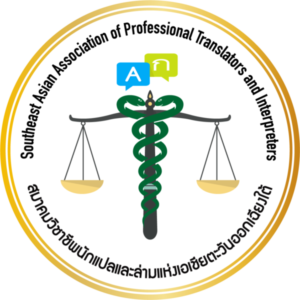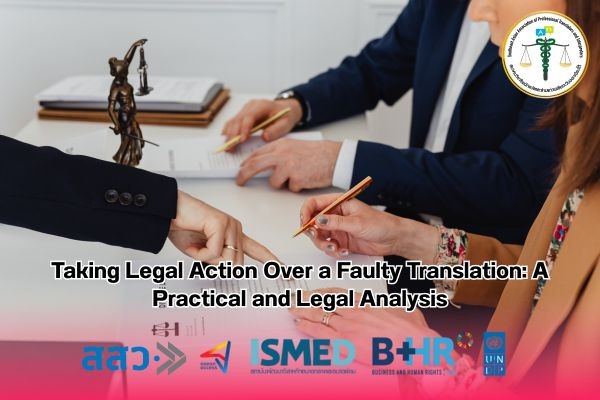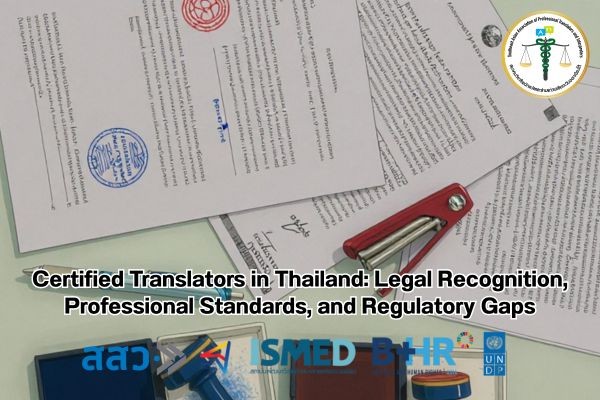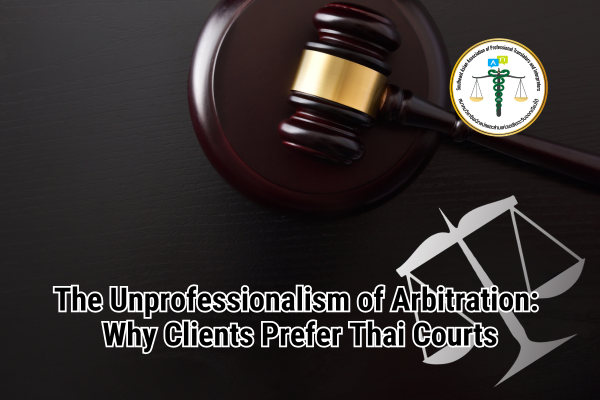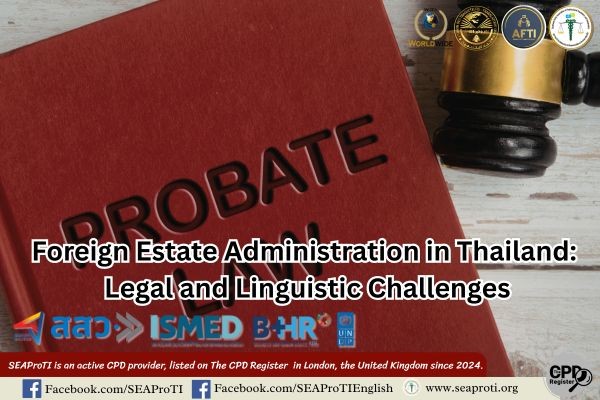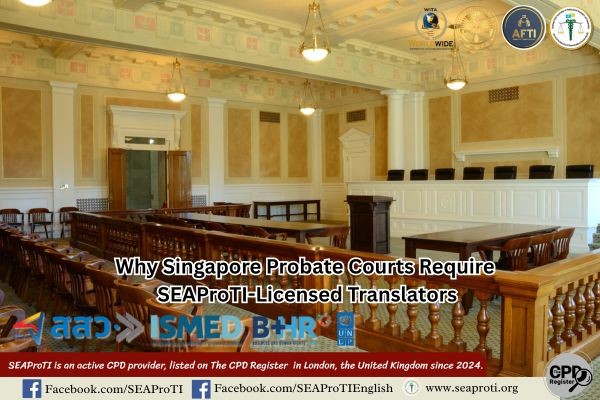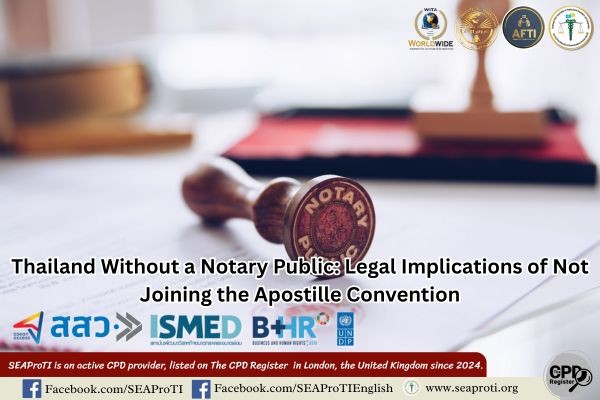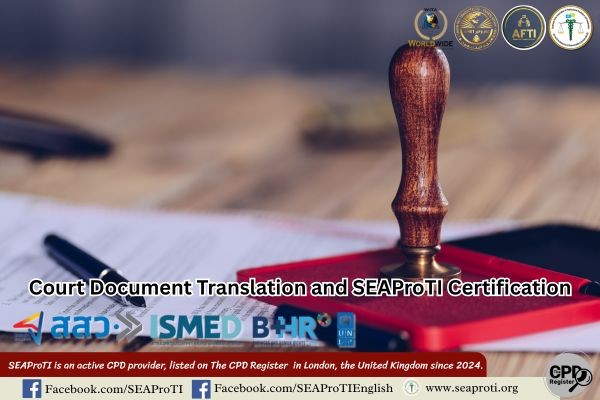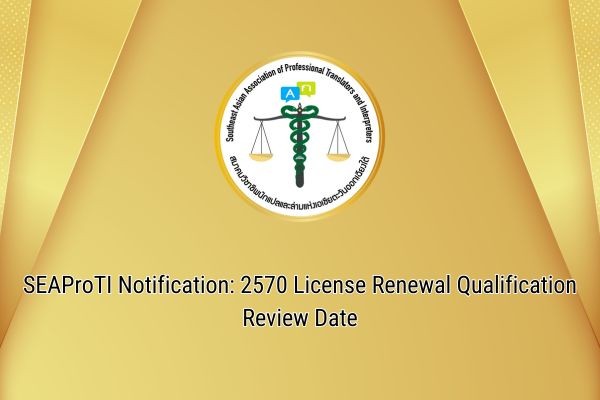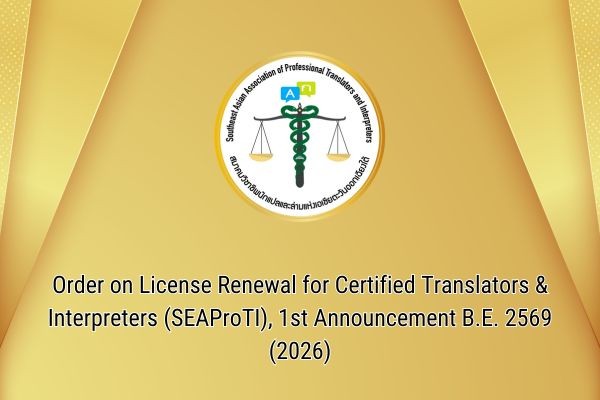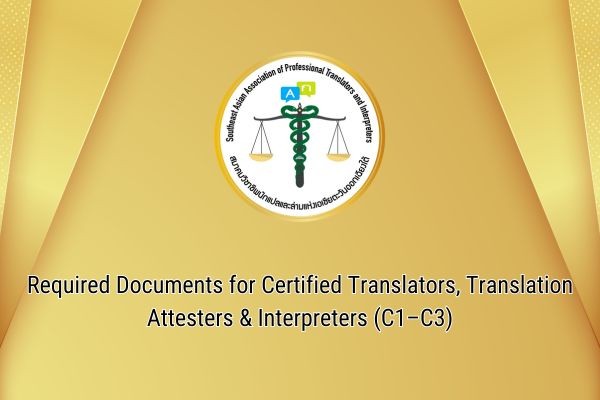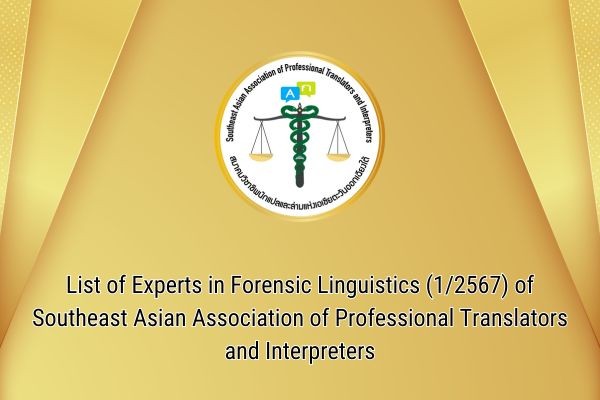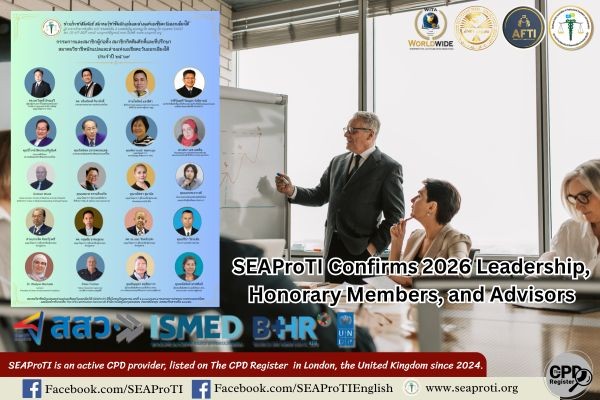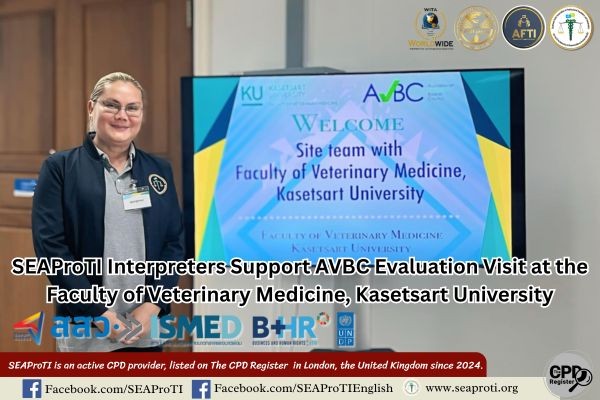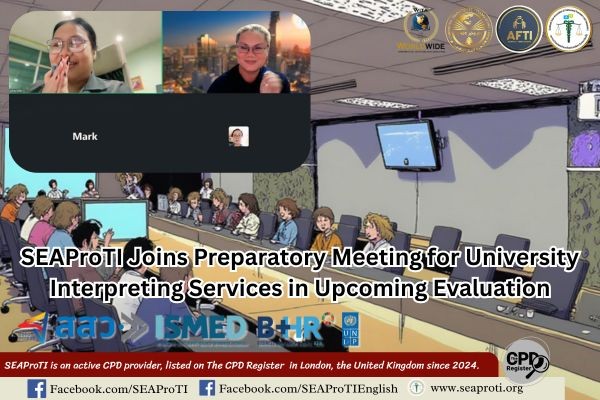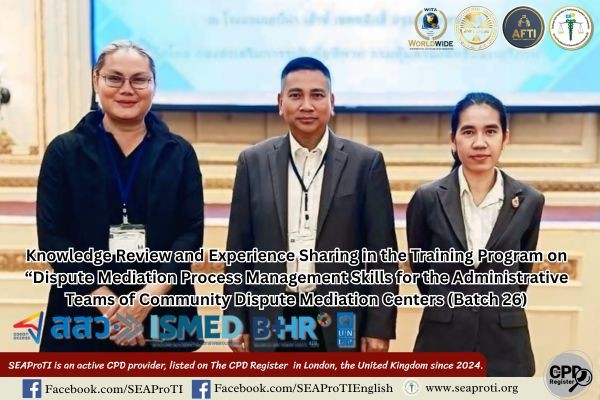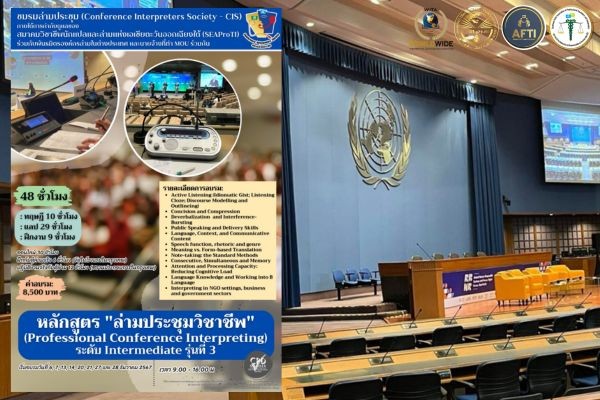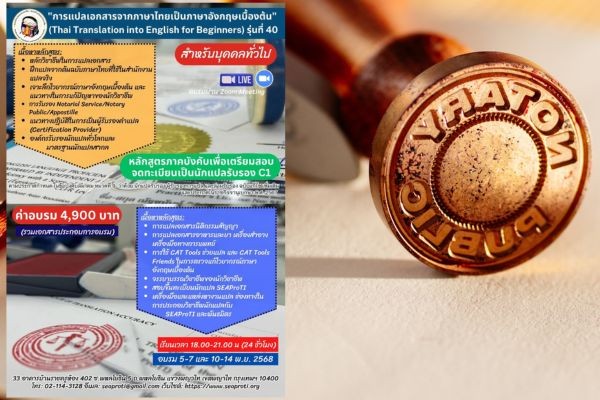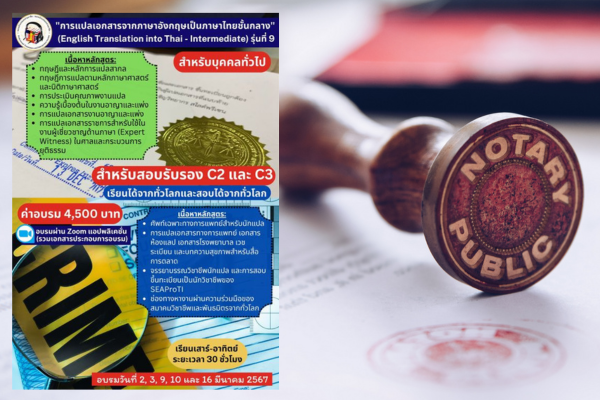Taking Legal Action Over a Faulty Translation: A Practical and Legal Analysis
17 August 2025, Bangkok – Translation and interpreting are not merely linguistic services; they are professional acts with legal, financial, and ethical consequences. Errors in translation or interpretation can cause significant harm—ranging from financial loss and regulatory penalties to violations of due process and human rights (González et al., 2012). This article provides an analytical overview of legal recourse and preventive strategies when mistranslations or interpretation errors result in material damage.
Legal Contexts and Bases for Action
The remedies available depend on the context of the mistranslation.
- Court interpreting errors may violate the constitutional or statutory right to a fair trial. Remedies include objections, motions to strike, substitution of interpreters, and in serious cases, appeals or retrials (Berk-Seligson, 2017).
- Document translation errors (e.g., in contracts, patents, compliance filings, or marketing) may trigger civil liability under theories of breach of contract, negligence/professional malpractice, or misrepresentation.
- Sworn or certified translations carry heightened responsibility; intentional distortions may trigger professional discipline or even criminal liability in some jurisdictions (Ortega-Hernández, 2020).
Preserving and Proving Evidence
Effective legal action requires early and careful evidence preservation:
- Maintain both the source and target texts, including metadata and version histories.
- Collect communications, glossaries, style guides, and instructions provided to the translator or agency.
- In litigation contexts, obtain official transcripts or audio/video records.
- Commission an independent expert linguistic report comparing the original and translated text, assessing error severity and its likely legal or financial impact.
Such expert testimony is often central to demonstrating causation and materiality (Mikkelson & Jourdenais, 2015).
Contractual and Regulatory Framework
Contracts with translators or agencies often contain clauses that affect remedies:
- Limitation of liability or indemnity provisions may restrict recovery.
- Some agreements impose error-correction (“cure”) obligations before litigation is allowed.
- Arbitration or mediation clauses may preclude court proceedings.
In addition, if the translator is certified, regulatory bodies or professional associations may offer disciplinary complaint mechanisms (e.g., ATA, NAATI, SEAProTI).
Mitigation Duties and Timeliness
Courts generally require that claimants mitigate damages. Parties must act promptly by:
- In court, objecting on the record and requesting remedies such as continuance or interpreter substitution.
- In documents, halting publication or suspending contract execution until corrections are made.
Delay or inaction may weaken a claim (Berk-Seligson, 2017).
Civil Claims and Potential Liabilities
Potential legal claims include:
- Breach of contract: Delivering translations below agreed standards.
- Negligence/professional malpractice: Failing to meet the professional standard of care.
- Misrepresentation: Misstating qualifications or quality guarantees.
- Indemnity claims: If contractually agreed.
- Damages may cover direct costs (retranslation, filing fees), consequential losses (delays, lost profits), or reputational harm, depending on jurisdiction (Ortega-Hernández, 2020).
Criminal Liability (Exceptional Cases)
Intentional falsification of translations—especially in sworn or judicial contexts—may constitute fraud, forgery, or obstruction of justice. While rare, this possibility underscores the need for robust ethical standards in the profession (González et al., 2012).
Litigation Strategy and Proof
To prevail, claimants must prove:
- Causation: The mistranslation directly caused the harm (e.g., a misinterpreted contract clause leading to breach).
- Materiality: Errors were substantive, not stylistic.
- Standard of care: Expert testimony can demonstrate deviation from professional norms.
- Mitigation: Reasonable steps were taken to limit damages.
Alternative Dispute Resolution
Given costs and reputational risks, mediation or arbitration may offer more efficient resolution. These processes are particularly suitable for commercial disputes, where time sensitivity is critical.
Preventive Measures
To reduce risk, stakeholders should:
- Vet translators and interpreters for qualifications, domain expertise, and liability insurance.
- Include clear accuracy standards, review procedures, and remedies in contracts.
- Use certified or sworn translations when legally required.
- Implement dual-review or back-translation for high-stakes documents.
- In litigation, agree on interpreter protocols and certified translation standards in advance.
Conclusion and Recommendations
Faulty translations can cause far-reaching consequences. Effective responses require a combination of legal awareness, procedural diligence, and expert linguistic evidence. Ultimately, prevention—through careful selection of qualified professionals and robust contractual safeguards—remains the most effective risk management strategy.
References
- Berk-Seligson, S. (2017). The bilingual courtroom: Court interpreters in the judicial process (2nd ed.). University of Chicago Press.
- González, R. D., Vásquez, V. F., & Mikkelson, H. (2012). Fundamentals of court interpretation: Theory, policy, and practice (2nd ed.). Carolina Academic Press.
- Mikkelson, H., & Jourdenais, R. (2015). The Routledge handbook of interpreting. Routledge.
- Ortega-Hernández, J. (2020). Liability of sworn translators and interpreters: Legal frameworks and comparative insights. Journal of Comparative Law and Practice, 22(3), 245–268.
About Certified Translators, Translation Certification Providers, and Certified Interpreters of SEAProTI
The Southeast Asian Association of Professional Translators and Interpreters (SEAProTI) has formally established qualifications and criteria for registered members as Certified Translators, Translation Certification Providers, and Certified Interpreters, published in the Royal Thai Government Gazette, Book 141, Part 66 Ng, Page 100, dated 25 July 2024, by the Secretariat of the Cabinet, Office of the Prime Minister of the Kingdom of Thailand. Full text available: The Royal Thai Government Gazette
SEAProTI is the first professional association in Thailand and Southeast Asia to institute a certification system for Certified Translators, Translation Certification Providers, and Certified Interpreters.
Head Office: Baan Rajakru Building, Room 402, No. 33, Soi Phaholyothin 5, Phaholyothin Road, Phaya Thai Subdistrict, Phaya Thai District, Bangkok 10400 Email: hello@seaproti.com | Tel: (+66) 2-114-3128 (Office Hours: Monday–Friday, 09:00–17:00)
การดำเนินคดีทางกฎหมายจากการแปลผิดพลาด: การวิเคราะห์เชิงกฎหมายและเชิงปฏิบัติ
17 สิงหาคม 2568, กรุงเทพมหานคร – การแปลและการล่ามไม่ใช่เพียงบริการทางภาษา แต่เป็นการปฏิบัติวิชาชีพที่มีผลทางกฎหมาย เศรษฐกิจ และจริยธรรม ความผิดพลาดในการแปลหรือล่ามอาจก่อให้เกิดความเสียหายอย่างมีนัยสำคัญ ตั้งแต่ความสูญเสียทางการเงิน การถูกลงโทษจากหน่วยงานกำกับดูแล ไปจนถึงการละเมิดสิทธิในการได้รับกระบวนการยุติธรรมที่เป็นธรรม (González et al., 2012) บทความนี้นำเสนอภาพรวมเชิงวิเคราะห์เกี่ยวกับแนวทางทางกฎหมายและมาตรการป้องกันในกรณีที่เกิดความเสียหายจากการแปลผิดพลาดหรือการล่ามคลาดเคลื่อน
บริบททางกฎหมายและฐานในการดำเนินคดี
แนวทางแก้ไขขึ้นอยู่กับ บริบท ของการแปลผิดพลาด
- ความผิดพลาดในการล่ามในศาล อาจละเมิดสิทธิในการพิจารณาคดีอย่างเป็นธรรมตามรัฐธรรมนูญหรือกฎหมาย ทำให้สามารถใช้วิธีการคัดค้าน ขอเพิกถอนคำแปล ขอเปลี่ยนล่าม หรือแม้แต่ยื่นอุทธรณ์/ขอพิจารณาคดีใหม่ได้ในกรณีร้ายแรง (Berk-Seligson, 2017)
- ความผิดพลาดในการแปลเอกสาร เช่น สัญญา สิทธิบัตร เอกสารกำกับดูแล หรือการตลาด อาจก่อให้เกิดความรับผิดทางแพ่งในลักษณะละเมิดสัญญา ความประมาทเลินเล่อ/การละเมิดมาตรฐานวิชาชีพ หรือการแถลงข้อความอันเป็นเท็จ
- การแปลแบบรับรอง/สาบานตน มีความรับผิดสูงกว่า หากมีการบิดเบือนโดยเจตนาอาจนำไปสู่การลงโทษทางวินัยหรือแม้แต่ความผิดทางอาญา (Ortega-Hernández, 2020)
การเก็บรักษาและพิสูจน์พยานหลักฐาน
การดำเนินคดีที่มีประสิทธิภาพต้องอาศัยการเก็บหลักฐานตั้งแต่เนิ่น ๆ
- เก็บรักษาต้นฉบับและฉบับแปล รวมถึงเมทาดาทาและประวัติการแก้ไข
- เก็บรวบรวมอีเมล คำแนะนำ พจนานุกรม คำศัพท์เฉพาะ และเอกสารขอบเขตงาน
- หากเป็นการล่ามในศาล ให้ขอสำเนาบันทึกการพิจารณาหรือภาพ/เสียงที่บันทึกไว้
- จัดทำ รายงานผู้เชี่ยวชาญด้านภาษาอิสระ เพื่อเปรียบเทียบต้นฉบับกับฉบับแปล ประเมินความร้ายแรงของข้อผิดพลาดและผลกระทบทางกฎหมายหรือการเงิน
รายงานผู้เชี่ยวชาญเหล่านี้มักมีบทบาทสำคัญในการพิสูจน์เหตุแห่งความเสียหาย (Mikkelson & Jourdenais, 2015)
กรอบสัญญาและกฎเกณฑ์
สัญญาจ้างนักแปลหรือตัวแทนมักมีเงื่อนไขที่จำกัดหรือกำหนดวิธีการแก้ไขปัญหา
- ข้อจำกัดความรับผิด หรือเงื่อนไขการชดใช้ค่าเสียหาย
- ข้อกำหนดแก้ไข (cure) ที่ให้นักแปลมีโอกาสแก้ไขข้อผิดพลาดก่อนการฟ้องร้อง
- ข้อกำหนดอนุญาโตตุลาการหรือไกล่เกลี่ย ที่อาจตัดสิทธิ์การฟ้องคดีในศาล
หากนักแปลมีการรับรองหรือเป็นสมาชิกองค์กรวิชาชีพ อาจสามารถยื่นเรื่องร้องเรียนผ่านกลไกการกำกับดูแลขององค์กรเหล่านั้น (เช่น ATA, NAATI, SEAProTI)
หน้าที่ในการลดความเสียหายและการดำเนินการอย่างทันท่วงที
ศาลมักกำหนดให้ผู้เสียหายต้องมีการลดความเสียหาย (duty to mitigate) โดยดำเนินการทันที เช่น
- ในศาล: ต้องคัดค้านทันที ขอคำชี้แจง เปลี่ยนล่าม หรือขอเลื่อนการพิจารณา
- ในเอกสาร: ต้องหยุดการเผยแพร่หรือการดำเนินสัญญาจนกว่าจะมีการแก้ไข
การเพิกเฉยหรือดำเนินการล่าช้าอาจทำให้ข้อเรียกร้องอ่อนลง (Berk-Seligson, 2017)
การเรียกร้องทางแพ่งและความรับผิดที่อาจเกิดขึ้น
ข้อเรียกร้องที่สามารถนำมาใช้ ได้แก่
- การละเมิดสัญญา: ส่งมอบงานแปลที่ไม่เป็นไปตามมาตรฐานที่ตกลงไว้
- ความประมาทเลินเล่อ/ละเมิดมาตรฐานวิชาชีพ: ไม่ปฏิบัติตามมาตรฐานที่พึงมี
- การแถลงข้อความอันเป็นเท็จ: กล่าวอ้างคุณวุฒิหรือคุณภาพที่เกินจริง
- การชดใช้ค่าเสียหายตามสัญญา (indemnity): หากมีข้อกำหนดไว้ในสัญญา
ค่าเสียหายอาจรวมถึงต้นทุนตรง (ค่าการแปลใหม่ ค่าธรรมเนียมยื่นเอกสาร) ความเสียหายทางอ้อม (การสูญเสียกำไร ความล่าช้า) และความเสียหายต่อชื่อเสียง (Ortega-Hernández, 2020)
ความรับผิดทางอาญา (กรณีข้อยกเว้น)
หากมีการบิดเบือนข้อความโดยเจตนา โดยเฉพาะในการแปลที่สาบานตนหรือต่อศาล อาจเข้าข่ายความผิดทางอาญา เช่น การปลอมแปลงเอกสารหรือการขัดขวางกระบวนการยุติธรรม แม้จะพบไม่บ่อย แต่เป็นสัญญาณถึงความสำคัญของมาตรฐานจริยธรรมในวิชาชีพ (González et al., 2012)
กลยุทธ์การดำเนินคดีและภาระการพิสูจน์
การเรียกร้องสิทธิ์จำเป็นต้องพิสูจน์ว่า:
- เหตุและผล (Causation): การแปลผิดเชื่อมโยงโดยตรงกับความเสียหาย
- สาระสำคัญ (Materiality): ความผิดพลาดมีสาระสำคัญ ไม่ใช่เพียงเรื่องสำนวนภาษา
- มาตรฐานวิชาชีพ (Standard of care): ใช้พยานผู้เชี่ยวชาญเพื่อยืนยันว่าการปฏิบัติไม่เป็นไปตามมาตรฐาน
- การลดความเสียหาย (Mitigation): แสดงหลักฐานว่ามีความพยายามลดผลเสียแล้ว
กระบวนการระงับข้อพิพาททางเลือก
การไกล่เกลี่ยหรืออนุญาโตตุลาการมักเป็นวิธีแก้ไขที่มีประสิทธิภาพและรวดเร็วกว่า โดยเฉพาะในข้อพิพาทเชิงพาณิชย์ที่มีความอ่อนไหวต่อเวลา
มาตรการป้องกัน
เพื่อป้องกันความเสี่ยง ควร:
- ตรวจสอบคุณสมบัติ ความเชี่ยวชาญเฉพาะด้าน และการมีประกันวิชาชีพของผู้แปล/ล่าม
- กำหนดมาตรฐานคุณภาพ กระบวนการตรวจทาน และวิธีแก้ไขข้อผิดพลาดในสัญญา
- ใช้การแปลที่รับรองตามกฎหมายในกรณีที่จำเป็น
- ใช้กระบวนการตรวจสอบคู่ (dual-review) หรือการแปลย้อนกลับ (back-translation) สำหรับเอกสารที่มีความสำคัญสูง
- ในกระบวนพิจารณาคดี ควรตกลงล่วงหน้าเรื่องมาตรฐานของล่ามและการรับรองเอกสารแปล
บทสรุปและข้อเสนอแนะ
การแปลผิดพลาดอาจก่อให้เกิดผลเสียที่กว้างไกล การแก้ไขปัญหาอย่างมีประสิทธิภาพต้องอาศัย ความเข้าใจทางกฎหมาย การเก็บพยานหลักฐานอย่างรอบคอบ และการใช้ผู้เชี่ยวชาญด้านภาษา อย่างไรก็ตาม การป้องกัน ผ่านการคัดเลือกผู้เชี่ยวชาญที่มีคุณภาพและการทำสัญญาที่รัดกุม ยังคงเป็นกลยุทธ์การจัดการความเสี่ยงที่ดีที่สุด
เอกสารอ้างอิง
- Berk-Seligson, S. (2017). The bilingual courtroom: Court interpreters in the judicial process (2nd ed.). University of Chicago Press.
- González, R. D., Vásquez, V. F., & Mikkelson, H. (2012). Fundamentals of court interpretation: Theory, policy, and practice (2nd ed.). Carolina Academic Press.
- Mikkelson, H., & Jourdenais, R. (2015). The Routledge handbook of interpreting. Routledge.
- Ortega-Hernández, J. (2020). Liability of sworn translators and interpreters: Legal frameworks and comparative insights. Journal of Comparative Law and Practice, 22(3), 245–268.
เกี่ยวกับนักแปลรับรอง ผู้รับรองการแปล และล่ามรับรองของสมาคมวิชาชีพนักแปลและล่ามแห่งเอเชียตะวันออกเฉียงใต้
สมาคมวิชาชีพนักแปลและล่ามแห่งเอเชียตะวันออกเฉียงใต้ (SEAProTI) ได้ประกาศหลักเกณฑ์และคุณสมบัติผู้ที่ขึ้นทะเบียนเป็น “นักแปลรับรอง (Certified Translators) และผู้รับรองการแปล (Translation Certification Providers) และล่ามรับรอง (Certified Interpreters)” ของสมาคม หมวดที่ 9 และหมวดที่ 10 ในราชกิจจานุเบกษา ของสำนักเลขาธิการคณะรัฐมนตรี ในสำนักนายกรัฐมนตรี แห่งราชอาณาจักรไทย ลงวันที่ 25 ก.ค. 2567 เล่มที่ 141 ตอนที่ 66 ง หน้า 100 อ่านฉบับเต็มได้ที่: นักแปลรับรอง ผู้รับรองการแปล และล่ามรับรอง
*สมาคมวิชาชีพนักแปลและล่ามแห่งเอเชียตะวันออกเฉียงใต้ เป็นสมาคมวิชาชีพแห่งแรกในประเทศไทยและภูมิภาคเอเชียตะวันออกเฉียงใต้ที่มีระบบรับรองนักแปลรับรอง ผู้รับรองการแปล และล่ามรับรอง
สำนักงานใหญ่: อาคารบ้านราชครู เลขที่ 33 ห้อง 402 ซอยพหลโยธิน 5 ถนนพหลโยธิน แขวงพญาไท เขตพญาไท กรุงเทพมหานคร 10400 อีเมล: hello@seaproti.com โทรศัพท์: (+66) 2-114-3128 (เวลาทำการ: วันจันทร์–วันศุกร์ เวลา 9.00–17.00 น.)

